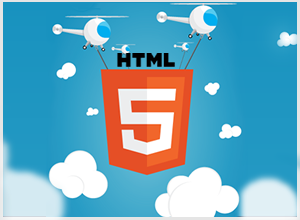 We have been hearing a lot about HTML5 lately, especially since Microsoft announced earlier this year that Windows 8 would run applications built using HTML5 and JavaScript. But what really are the features of HTML5? Is it mature enough for the real world and why are companies like Microsoft and Apple utilizing it?
We have been hearing a lot about HTML5 lately, especially since Microsoft announced earlier this year that Windows 8 would run applications built using HTML5 and JavaScript. But what really are the features of HTML5? Is it mature enough for the real world and why are companies like Microsoft and Apple utilizing it?
Essentially, HTML5 encompasses a set of new features that are being added to the current HTML standard for the purposes of enhancing the user experience, eliminate the use of third party tools and plugins, which could be insecure or perform poorly, and to make development easier for programmers. The standard for HTML5 is still in the process of development by the WHATWG community: the Web Hypertext Application Technology Working Group. Their approach is a departure from the tradition method where a committee defines what features are included in the standard. The WHATWG approach utilizes Living Standards which are continuously updated as based on feedback received from community members. The HTML5 standard will be finalized once there are two complete implementations which have passed validation tests.
So what are some of the improvements that can we look forward to as more HTML5 features are implemented?
- We can expect faster browsers as HTML5 is optimized for speed.
- Better cross browser compatibility as the standard specifies how browsers should processed HTML code.
- It will define APIs (Application Program Interfaces) for the underlining web architecture giving programmers more flexibility in the applications they create.
- It will be backward-compatible with the current HTML4 standard.
- It will be more secure through the implementation of a sandboxed media type that protects web surfers from malicious code that could be embedded through frames in web pages.
Already numerous HTM5 features are supported in browsers such as Internet Explorer 9, Safari, Chrome, FireFox, Opera and mobile browsers:
- New Language Elements, including section, article, aside hgroup, header, footer, nav, figure and figcaption.
- New HTML elements such as audio, video, embed, mark, progress, meter, time, canvas, command, details, summary, datalist, keygen and output.
- New input types for forms: tel, search, url, email, datetime, date, month, week, time, datetime-local, number, range and color.
- New Attributes such as autofocus, fieldset and many more.
- APIs for video, offline Web applications, Editing, Drag & Drop and browser history.
- Multi-media features: built in support for audio (Wav, MP3, Ogg/Vorbis and ACC) and video (Ogg/Theora, H.264 and WebM). Note: some browsers may not support every format listed.
- New Graphic features: Canvas (an HTML drawing space), Canvas Text, SVG (Scalable Vector Graphics) and WebGL (for creating 3D graphics)
There is also support for:
- Hash Change Event – for managing browser history.
- GeoLocation – finding the user’s current location.
- Local Storage – saving data on a user’s device between sessions.
- Offline Applications – browser applications that do not require an internet connection.
- Post Message – cross window messaging.
- Query Selector – for query CSS attributes
- Session Storage – stores data for only one session
- Workers – allows multiple scripts to run in the background
HTML5 has great potential to improve the usability of web applications plus it can become the vehicle for creating cross platform applications especially as new devices are introduced into the market. It is an exciting part of the future of web development which should not be ignored.
For more information, see:
